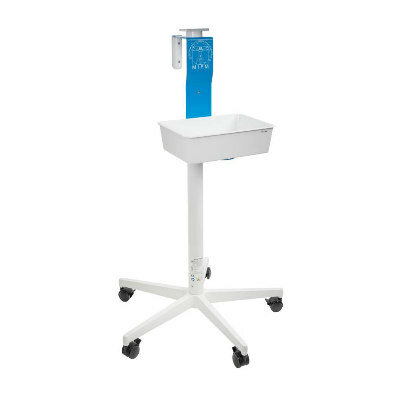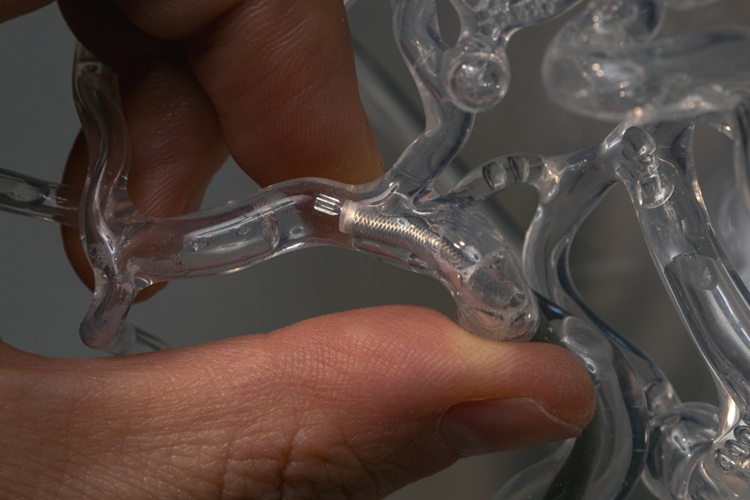Resorbable Pacing Leads Can Significantly Reduce Risk After Cardiac Surgery
|
By HospiMedica International staff writers Posted on 04 Nov 2022 |
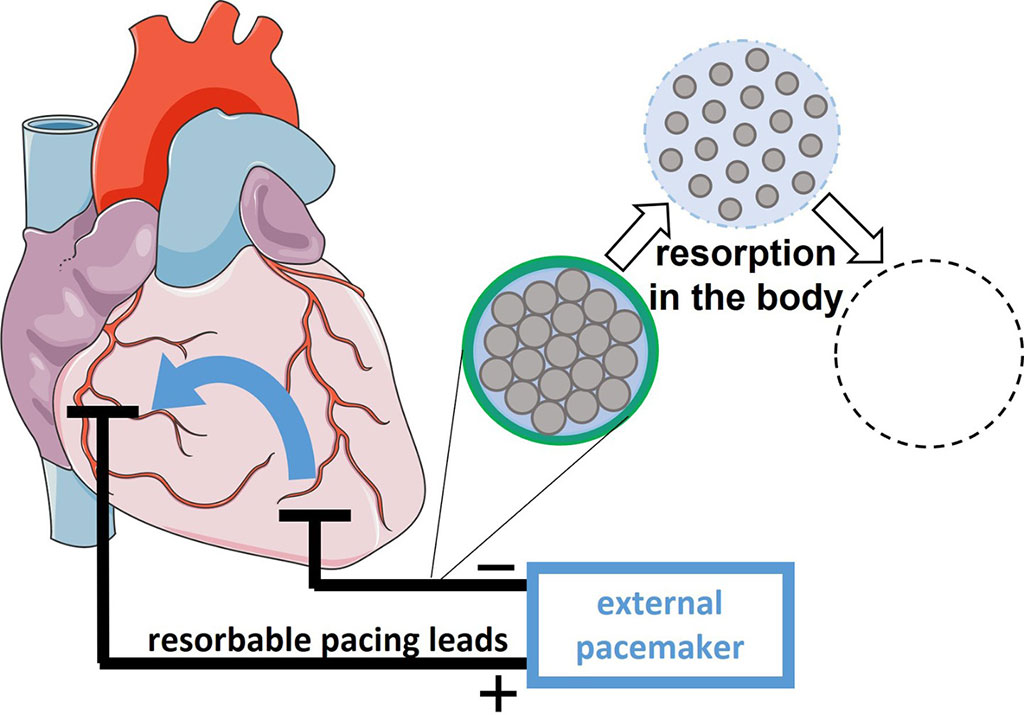
Postoperative cardiac arrhythmias are common after cardiac surgery. They are routinely treated with external pacemakers and temporary pacing leads that are prophylactically implanted at the time of surgery. This is inherently associated with several risks: Manually extracting modern stainless steel pacing leads can result in complications as the wires can, in some cases, resist extraction due to tissue in-growth. However, if the leads are cut and left in the body, there is the risk of infection and migration; in the case of the latter, revision surgery may be required. Now, a team of researchers is developing resorbable pacing leads that can significantly reduce risk factors after cardiac surgery.
In the project “Resorbable Molybdenum Temporary Cardiac Electrodes,” or “ReMoTe CarE” for short, researchers from the Fraunhofer Society (Munich, Germany) are investigating a completely new approach: In the future, bioresorbable leads that can be left in the body and then disappear by resorption after a defined period are expected to replace conventional leads. This approach is based on the use of the metal molybdenum (Mo), which offers several advantages, such as the ability to degrade uniformly in the body, biocompatibility, and high mechanical strength and electrical conductivity. For use in bioresorbable pacing leads, it is coated with resorbable biopolymers to electrically insulate the surrounding tissue.
The researchers are testing and optimizing the mechanical, electrical and degradation properties of the materials used. The demonstrators - strands of fine metal wires that are coated with biopolymers - will be tested in preclinical studies. The objective is to avoid the complications associated with non-resorbable pacing leads. This would not only provide great relief to patients but also significantly relieve the burden on both healthcare professionals and the healthcare system.
Related Links:
Fraunhofer Society
Latest Critical Care News
- Smart Capsule Offers Real-Time Profiling Across GI Tract
- Ultra-Thin Implant Helps Patients with Spinal Cord Injury Recover Lost Functions
- Portable Cell Therapy Device to Enable Rapid On-Demand Modification of RBCs at POC
- Monitoring Airborne Fungal Spores Could Help Predict COVID-19 & Flu Surges
- New System Measures Blood Sodium Without Needles
- Sleep Data from Wearable Device May Help Predict Preterm Birth
- AI Tool Interprets Echocardiograms in Minutes
- Electrochemical Catheter Hub Prevents Bloodstream Infections
- Noninvasive Double Microbubble Delivery Approach Marks Breakthrough in Brain Cancer Treatment
- Self-Healing Skin-Like Material to Find Applications in Health Monitoring, Surgery and Implants
- Highly-Sensitive Electronic Skin Allows Robots to Feel Heat, Pain and Pressure

- AI-Powered Wearable Sensor Predicts Labor Onset in Pregnant Women
- Implantable Device to Redefine Continuous Glucose Monitoring
- Smart Microgel Could Repair and Replace Damaged Organs
- Smart Breath Tracker Wristband to Revolutionize Respiratory Care
- Stronger Blood Clot Prevention Measures Needed After Leg Artery Procedures in High-Risk Patients
Channels
Surgical Techniques
view channel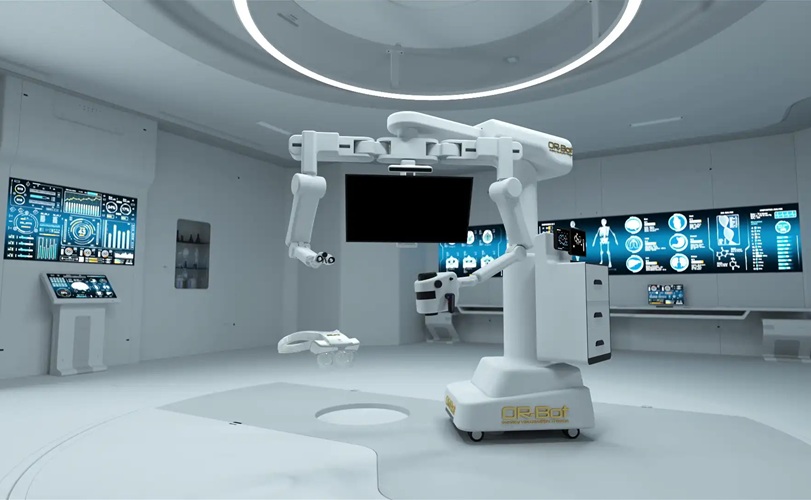
First-Ever Technology Makes Blood Translucent During Surgery
No matter the discipline or scale, bleeding is a regular part of any surgery and can create several challenges. In operating room imaging, seeing through blood in real-time during a surgery has been a... Read more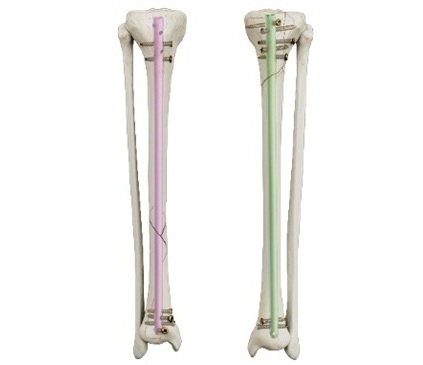
Tibia Nailing System with Novel Side-Specific Nails to Revolutionize Fracture Surgery
Smith+Nephew (Hull, UK;) has launched its new TRIGEN MAX Tibia Nailing System for stable and unstable fractures of the tibia, including the shaft. It is the only system to now offer trauma surgeons the... Read morePatient Care
view channel
Revolutionary Automatic IV-Line Flushing Device to Enhance Infusion Care
More than 80% of in-hospital patients receive intravenous (IV) therapy. Every dose of IV medicine delivered in a small volume (<250 mL) infusion bag should be followed by subsequent flushing to ensure... Read more
VR Training Tool Combats Contamination of Portable Medical Equipment
Healthcare-associated infections (HAIs) impact one in every 31 patients, cause nearly 100,000 deaths each year, and cost USD 28.4 billion in direct medical expenses. Notably, up to 75% of these infections... Read more
Portable Biosensor Platform to Reduce Hospital-Acquired Infections
Approximately 4 million patients in the European Union acquire healthcare-associated infections (HAIs) or nosocomial infections each year, with around 37,000 deaths directly resulting from these infections,... Read moreFirst-Of-Its-Kind Portable Germicidal Light Technology Disinfects High-Touch Clinical Surfaces in Seconds
Reducing healthcare-acquired infections (HAIs) remains a pressing issue within global healthcare systems. In the United States alone, 1.7 million patients contract HAIs annually, leading to approximately... Read moreHealth IT
view channel
Printable Molecule-Selective Nanoparticles Enable Mass Production of Wearable Biosensors
The future of medicine is likely to focus on the personalization of healthcare—understanding exactly what an individual requires and delivering the appropriate combination of nutrients, metabolites, and... Read more
Smartwatches Could Detect Congestive Heart Failure
Diagnosing congestive heart failure (CHF) typically requires expensive and time-consuming imaging techniques like echocardiography, also known as cardiac ultrasound. Previously, detecting CHF by analyzing... Read moreBusiness
view channel
Bayer and Broad Institute Extend Research Collaboration to Develop New Cardiovascular Therapies
A research collaboration will focus on the joint discovery of novel therapeutic approaches based on findings in human genomics research related to cardiovascular diseases. Bayer (Berlin, Germany) and... Read more










